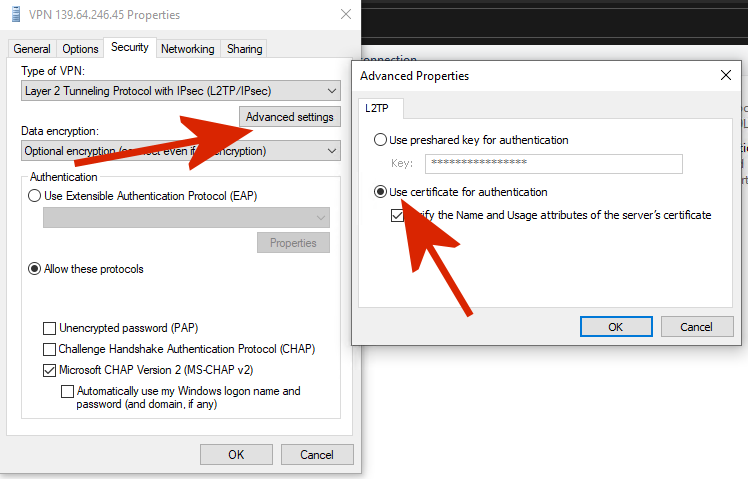
In the IKE Fragmentation drop-down list, choose the appropriate option. In the Keep-alive packet rate field, enter a value for the rate keep-alive packets are sent. Enter the UDP port for the NAT in the NAT Traversal Port field. It is used if the gateway indicates support through the negotiation or the detection of the NAT.

No additional information needs to be entered. Use an Existing Adapter and Current Address - Uses an existing adapter and its address.Use a Virtual Adapter and Random Address - Allows the client to use a virtual adapter with random address.Use a Virtual Adapter and Assigned Address - Allows the client to use a virtual adapter with a specified address.From the Adapter Mode drop-down list, choose the desired adapter mode for local host based on the Auto Configuration. DHCP Over IPSec - Gives the client the opportunity to request settings from the computer through DHCP over IPSec.With the support of the Push method by the computer, the request returns a list of settings that are supported by the client. IKE Config Push - Gives a computer the opportunity to offer settings to the client through the configuration process.With the support of the Pull method by the computer, the request returns a list of settings that are supported by the client. IKE Config Pull - Allows setting requests from a computer by the client.Disabled - The disabled option disables any automatic client configurations.From the Auto Configuration drop-down list, choose the desired configuration. The port number used in the pictured example is 400. In the Port field, enter the number of the port to be used for the connection. In the Host Name or IP Address field, enter the remote host IP address, which is the IP address of the configured WAN. These are used to define the network parameters for the Client to Gateway connection. Note: The General section is used to configure the Remote and Local Host IP addresses. The VPN Site Configuration window appears: The Shrew Soft VPN Access Manager window opens: Click the Shrew VPN Client program on the computer and open it. v4.2.2.08 Configure the Shrew VPN Client Connection on Windows.
#CISCO IPSEC VPN CLIENT WINDOWS 10 HOW TO#
To know more on how to configure Client to Gateway VPN, refer to Set Up a Remote Access Tunnel (Client to Gateway) for VPN Clients on RV042, RV042G and RV082 VPN Routers. Otherwise you need to configure a Client to Gateway VPN connection before you can start to configure the Shrew VPN. Note: This document assumes you have already downloaded the Shrew VPN Client on the Windows computer. The objective of this document is to show you how to configure Shrew VPN Client for a computer that connects to a RV042, RV042G or RV082 VPN Router.

#CISCO IPSEC VPN CLIENT WINDOWS 10 SOFTWARE#
Shrew VPN Client is software configured on a remote host device that provides easy and secure VPN connectivity. Client to Gateway VPN connections are useful for remote employees who want to securely connect to the office network remotely.

A Client to Gateway VPN connects the desktop or laptop of a user to a remote network using VPN client software. Configuration of Shrew VPN Client on RV042, RV042G and RV082 VPN Routers through Windows ObjectiveĪ Virtual Private Network (VPN) is a method for remote users to virtually connect to a private network over the Internet.


 0 kommentar(er)
0 kommentar(er)
